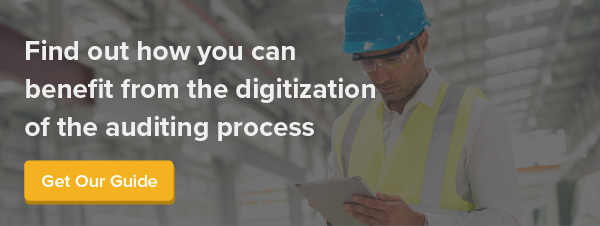
Call us ahead of our time: While we’ve always understood the incredible impact efficiency measures have on energy operations, we’re seeing the mainstream take notice in a big, big way. As corporations work to achieve significant sustainability goals, it has led to a reality where energy efficiency has become a de facto obligation for leading business and their facilities.
Given the nearly 6 million non-residential buildings in the United States representing over 100 billion square feet of space, energy and electrification represent a $2 trillion opportunity over the next 10 years.
Yes, that’s a lot of opportunity for our industry, but we’re also putting our own dollars, reputations, and human capital and energy at stake on these projects. With so much work on the horizon, now is the time to make sure our energy audits are the best they can possibly be. If we don’t, there will be a high price to pay.
To help share this message, I recently joined B.J. Pidgeon to present a webinar for the National Association of Energy Service Companies. B.J. is a project engineer at Current, and he provided his expertise on best audit practices. Read on to learn more about the big ideas and key takeaways of our presentation.
The Impacts of Questionable Energy Auditing
It takes time and energy to create effective knowledge and procedures for energy auditing. Is it really worth the investment?
The short answer is a resounding “yes.” Poor auditing procedures result in financial losses, either from the initial project implementation or from the subsequent performance of the work itself. Incorrect materials, wrong quantities, inaccurate specification or dimensions, and wrong estimates about labor all come back to bite you on the bottom line.
When you don’t have who and what you need when it’s time to do the installation, it can throw off schedules and add costs to the project. That’s the last thing you want to do in our current environment when supply chain challenges are already wreaking havoc on shipping costs, lead times, and material availability.
These errors further cause problems downstream as inaccuracies lead to smaller energy savings than guaranteed. That shakes client confidence, damages your reputation, and also means more money out of pocket for project remediation.
With so much on the line, you need an energy audit process designed to minimize the possibility for error while maximizing your potential profits.
Introducing the STAR Audit Process
How do we create the most effective audit process possible? As we worked on answering that question, we spoke with leaders throughout the energy industry. We also took inspiration from our peers in the insurance and aviation industries, both of which place high value on processes that eliminate risk. The result of our research is something we call Standardized Targeted Audit Requirement, or the STAR audit process.
What makes STAR unique is that it takes a three-pronged approach to energy audits by recognizing that people cannot be divorced from processes and standards. You need excellence and standardization across all three to ensure that your energy audits hit the mark every time.
To understand what we mean by this three-pronged approach, let’s take them one at a time.
Experienced People Lead to Quality Audits
Your auditor is often the single point of contact for a customer during the presale phase of your project. If you have people who are coming and going every couple of months, that point of contact is not going to be able to offer the same depth of value as an experienced auditor who understands the profession.
“Experience” here doesn’t just mean time in the industry; it also means possessing the drive to learn to get better and better. To our mind, an experienced auditor will display three key character traits:
- The Heart of a Teacher
Most customers know very little about lighting systems. They rely on your auditor for expertise and guidance. An experienced auditor should take the time to talk to your customer, show them what’s in the field, and teach them about the solutions that are available. - The Eye of a Salesperson
When your auditor visits a site, are they solely focused on the job at hand or are they keeping an eye open for critical clues to the sale as well as other opportunities? Your auditor should be proactive in the field, helping customers understand how they can benefit from the proposed work and future upgrades. - The Mind of an Engineer
The auditing process is about more than just counting lights. It’s about solving a problem and figuring out what details should be captured on-site to inform the way solutions are developed. An experienced auditor will take on these challenges and think like an engineer about the best ways to meet them.
Finally, the best auditors welcome constructive criticism. While it’s not economically feasible to build a team to audit your auditors, they should be actively seeking out feedback on their work, both from the customer and the downstream teams that rely on the audit information to complete their work.
As you work to invest in your people, be sure to encourage and cultivate an environment where feedback is viewed positively as an opportunity to grow.
Good Processes Produce Consistent Results
Processes are the second prong of the STAR approach to auditing. When you have excellent processes in place, it reduces the possibility of making mistakes. And the link between people and processes is the training you provide to your auditors.
At SnapCount, we offer a certification program to help ensure your auditors are trained on best practices and procedures. You should also set ongoing education goals for your auditors and hold them accountable for meeting them. As you develop your team, your most experienced auditors can also act as mentors for newer hires who still need to learn.
The Digitization of the Auditing Process
One recent development in auditing that has had big implications for minimizing risk is digitization. Digital tools like SnapCount are an excellent way of ensuring your auditors follow a consistent, repeatable process that’s designed to produce the best results.
When you embrace digitization, you’ll see it impact your auditing process across these four dimensions:
- Automation
We’ve come a long way since the days of using pen and paper. SnapCount provides broad and extensible field data capture, supporting auditors with myriad visual tools and media. That includes things like floor plans, maps, photographs, video, and even a 360-degree camera integration.
All this is backed up by rock solid and reliable data synchronization that ensures auditors can work without a Wi-Fi connection and not worry the data they capture will somehow be lost.
- Integration
The goal of digitization is to ensure these projects start digital and remain digital throughout a continuous workflow.
Manual and semiautomated methods require a lot of scribbling, copying, and pasting. Digitization provides an integrated, consistent means of capturing and storing information. It also helps eliminate the risk of miscommunications with customers by providing a consistent standard for deliverables.
- Collaboration
Data sharing has opened a whole new world in enabling collaboration between every party working on a lighting project. Because data is stored on the cloud, it can easily be shared between auditors, distributors, and installation partners for faster results. This allows everyone in your value chain to perform with better speed and precision. - Insight
It’s hard to mine meaning and actionable intelligence from a bunch of disconnected Excel files. Fortunately, those days are done. Digitization pulls data together into one key source of truth, which can then be analyzed for patterns and trends.
This allows you to use information gleaned from the field to make operationally accurate decisions that boost your profits. Over time, this can result in greater efficiency and better performance, all driven by data.
As you can see, the reason STAR emphasizes continued education for your auditors, as well as supplies them with the best digital tools, is that these process enhancements can make a big impact on your business. But there’s still one more piece of the puzzle.
Ask for These Standards to Minimize Risk
The third and final prong of the STAR approach to the auditing process is to ensure you’re asking for the right standards. While it may mean a little more legwork up front, each of these standards acts as a guardrail to ensure your auditors minimize the risk of making mistakes.
Depending on the needs of your customer, your project goals, and the solution you propose, the data you could potentially capture during an audit is endless. Here, at a very high level, are the STAR minimal data standards for lighting audits, but please keep in mind this is just the tip of the iceberg:
| Building/floor/area | Specific room | Lamp/ballast/fixture data | Accurate system wattages for each lamp/ballast/fixture system | Line voltage |
| Hours of operation | Fixture Height | Exterior-specific additions to lamp/ballast/fixture callout | Accurate kWh rate | Photo documentation |
|
Required lifts |
Ceiling height |
Fixture quantities |
Documentation of pre-existing conditions | Audit cross-referenced to map/drawing |
|
Existing controls |
Ceiling type |
Light meter readings |
Suggested solutions |
Every line item properly attributed to the correct room/space |
While these standards might feel like just another checklist to follow, when thinking about the STAR audit procedure, it’s important to consider the “what” and the “how” behind each standard. You can think of the “what” as the actual core data—the voltage, for example, or the hours/years of operation. Your “what” is the actionable data you get from an audit.
But in terms of importance, the “how” is much more significant. How do you confirm your data’s correct? What methods did you use for documentation? How confident is your auditor? If you’re relying on a single source, your “how” is weaker than you might think. But there are ways to improve it.
With those ideas in mind, let’s look at two examples of data you might collect, through the lenses of the “why” and the “how.”
- Line Voltage
Your auditor can’t afford to get the line voltage wrong. Unfortunately, it’s easy to do, which can cause significant problems for your project. That’s why we recommend getting two primary sources to confirm the line voltage is accurate.
Using two sources to substantiate your data is an important part of the “how.” If your sources aren’t as reliable as they should be, you could end up with incorrect information about line voltage that can completely derail your lighting project. From creating safety hazards to damaging fixtures, when you’re wrong about voltage, it leads to much bigger problems throughout the rest of the process. - Hours of Operation
Unlike a voltage measurement, hours of operation can be a surprisingly slippery piece of data to capture. A site’s hours of operations will never be exact, but if your auditor gets it wrong, it can throw off the project’s payback period, leading to a very unhappy customer.
How do you get it as close to right as you possibly can? An auditor should factor in all available information, from their own observation and experience to site contacts, occupant interviews, utility bills, and information from environmental monitoring systems or building management systems, if it’s available. What’s important here is to recognize that you’ll never be able to get a completely definitive answer. That’s why you need as many secondary sources as possible.
These are only two examples to highlight the differences that can exist between standards, and how to go about getting it right. But if your auditors put that level of care into all of them, they’ll prevent some major mistakes while maximizing your profitability.
Lay the Groundwork Today for Better Energy Audits Tomorrow
We developed the STAR audit process because we believe now is the best time to improve your procedures. With so many big opportunities on the horizon, the winners will be those companies who were most prepared to take advantage of them.
Yes, it means doing some groundwork today, but it’s up to you to champion this process. When you do, your company will be in a great position to maximize profits while minimizing risks on your future energy audits.






Share this post: